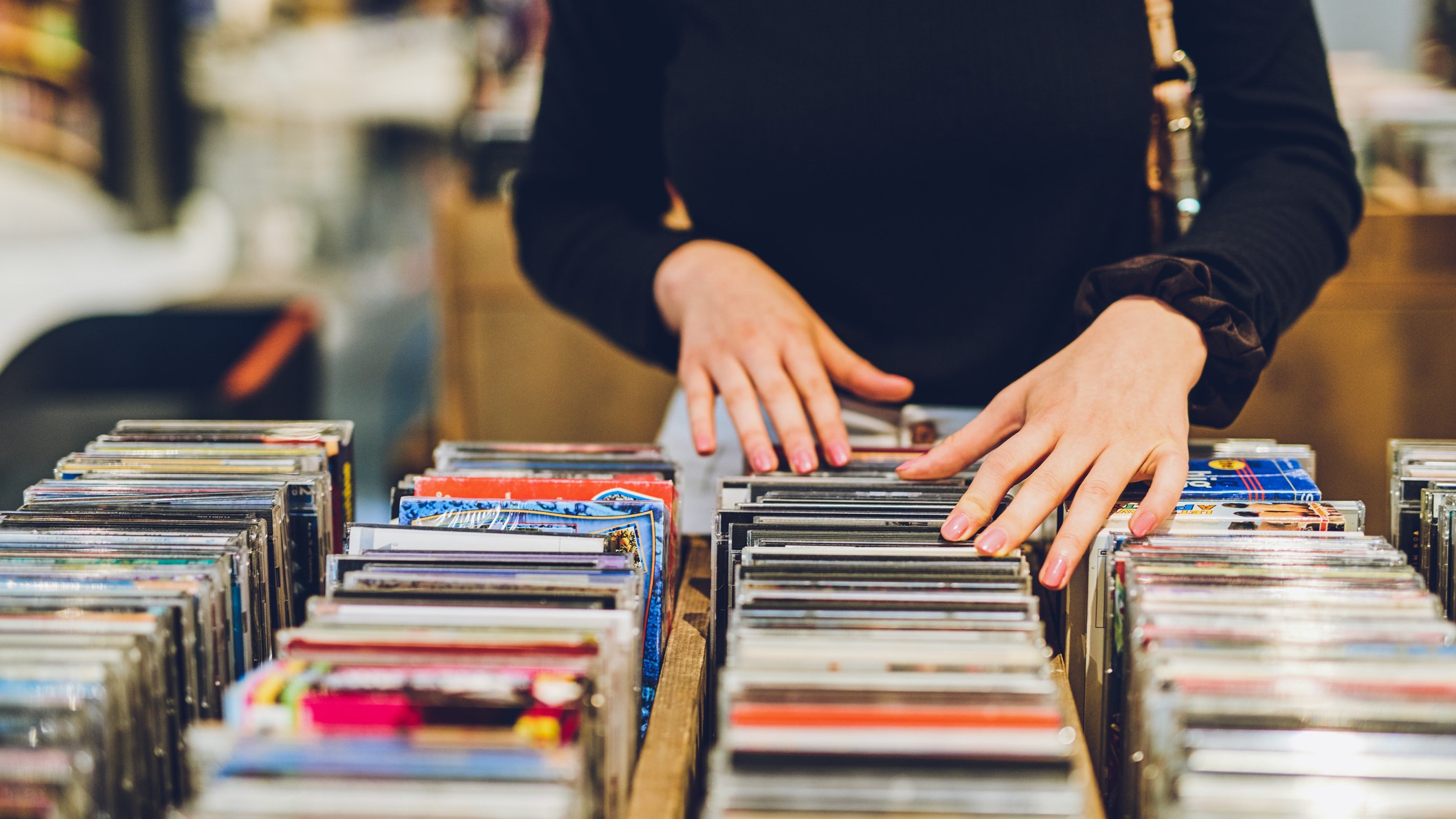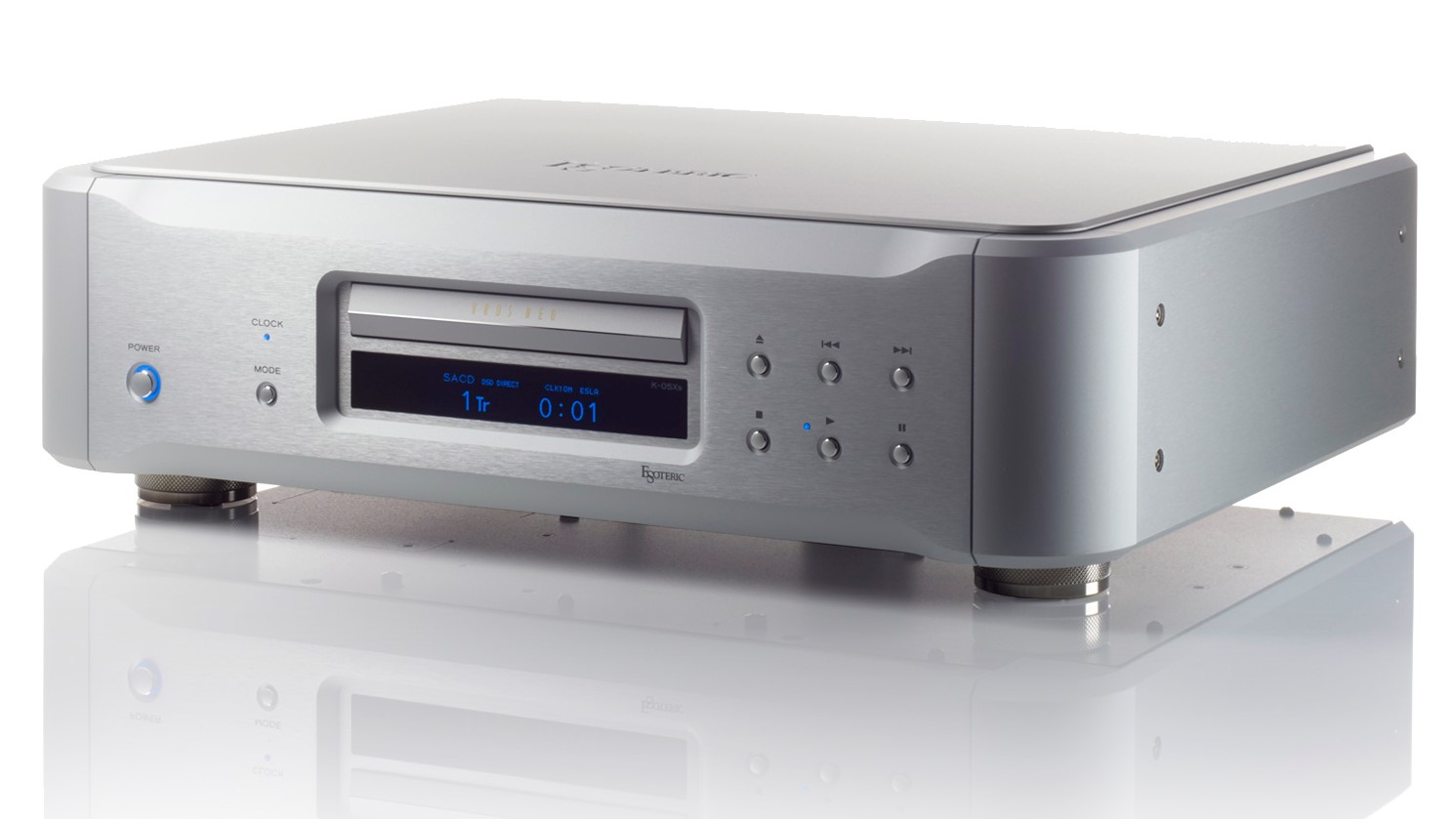The CD turns 40: why I love (and hate) playing music on compact discs
40 years of perfect sound forever

Happy birthday, compact disc! Developed by Philips and Sony and released to the public in October 1982, the Digital Audio Compact Disc format (later mercifully shortened to just CD) transformed the way people listened to music. It also triggered a steep decline in the sales of vinyl LPs – a format that has since come roaring back – and kick-started a digital music evolution that led to the best music streaming services many of us use and love.
If you weren’t around for that transition, or if streaming is the only way you’ve ever listened to music, it’s hard to describe how major a leap it was to go from playing a format (vinyl) that was easily damaged, with common problems like warps and surface scratches adding audible noise that got in the way of enjoying the sound. (Though some would say that that noise is a big part of vinyl’s charm.)
CDs, in contrast, were dead-silent and noise-free. Not only that, but they required substantially less care and maintenance, and you didn’t have to flip the side halfway through when playing an album. They also had a longer total playing time than LPs, which conveniently allowed for “bonus tracks” to be included on the disc.
Unlike with vinyl LPs, you could take CDs on the road: in-car players let you turn off the radio and listen to your preferred music while driving and portable ones could be paired with headphones for commuting and travel.
All great stuff, right? The truth is, I hated the CD format when it first came out.
Perfect Sound Forever
A few years following the CD format’s birth, I was working in a record store where we stocked a modest collection of the available discs alongside the endless stacks of new and used records. It was not unusual at that time for people to come in the store and trade their full vinyl collection for enough credit to walk out with a few CDs. Records were getting dumped like trash – though ironically, with the vinyl comeback, many LPs that people tossed in the 1980s now sell for loads of money in vintage vinyl stores and on websites like Discogs.
Along with my disgust at witnessing the wanton abandonment of vinyl, I was irked by the higher pricing for the new format, which added several dollars to the cost of an album. And you needed to buy a new machine – a CD player – to listen to discs, and those were expensive at the format’s beginning.
Sign up for breaking news, reviews, opinion, top tech deals, and more.
While average listeners were generally fine with the sound of early CDs, mainly appreciating the removal of background noise from playback, there was a backlash against the format among audiophiles, some of whom found the sound to be anemic in comparison with the lusher presentation of well-maintained vinyl.
This led to a whole industry of small companies making high-end CD players and separate digital-to-analog converters – much of it sold at nosebleed prices – that were designed to satisfy the desire of critical listeners to eke every last drop of sound quality from their CDs.
I held off as long as possible, clinging to my vinyl and turntable, but eventually caved in and bought a cheap portable CD player – as if to declare I wasn’t fully committed to the format. But then I started collecting CDs.

A CD revival?
Though its ascendence was crushed first by the arrival of digital downloads, and then by streaming, the CD has made a comeback of sorts. According to statistics compiled by the Recording Institute of America (RIAA), U.S. sales volume for CDs in 2021 rose 47.7% year-over-year – the first increase since the format started its steep unit sales nosedive in the mid-2000s.
The reason for the climb? Part of it has to do with… vinyl. A backlog on the vinyl LP production front due to its exploding popularity has forced artists who are not Taylor Swift, and labels that are not Sony or Universal Music, to turn to the CD format for their physical releases.
Another part of the comeback can be attributed to the pandemic, at the height of which physical media formats of all types experienced a sales bump due to homebound listeners wanting to expand collections and simply exercise their freedom to consume.
But the CD comeback has crested: the RIAA’s 2022 mid-year music revenue report cites a drop in CD unit sales of 3.7% year-over-year. (Vinyl sales, in comparison, are up 15.7% – a testament to that format’s ongoing durability.)
Of course, streaming is where the action is at now for digital music playback, making any concept of a lingering compact disc revival about as tenable as a cassette tape revival.
After starting out by offering compressed, MP3-quality music, services like Apple Music and Amazon Music Unlimited now offer lossless, CD-quality streams at no additional cost. Not only that, but they go beyond what the CD offers performance-wise by streaming in 24-bit high-resolution audio with sample rates up to 192kHz for specific albums and tracks. (For the CD format, audio is encoded at just 16-bit/44.1kHz resolution.)
So what does the CD now have to offer? Basically, nostalgic appeal for folks like me who came of age in the CD era. I still maintain my racks of CDs, and occasionally play them in a 4K Ultra HD Blu-ray player (DVD, Blu-ray, and Ultra HD Blu-ray disc players have always supported CD playback) instead of streaming.
But what I love most about playing CDs – and I guess I could say this to a lesser extent about vinyl – is the act of taking a disc out of its packaging, putting it in a player, listening, and then filing it away again. It’s a process that’s incredibly familiar and satisfying. And while I can’t say someone who came of age in the streaming era and has never done that will experience the same warm and fuzzy feeling, it’s enough that I’ll keep my CDs around, even though 90% of the time I’ll instead opt for the convenience – and quality – of streaming.

Al Griffin has been writing about and reviewing A/V tech since the days LaserDiscs roamed the earth, and was previously the editor of Sound & Vision magazine.
When not reviewing the latest and greatest gear or watching movies at home, he can usually be found out and about on a bike.